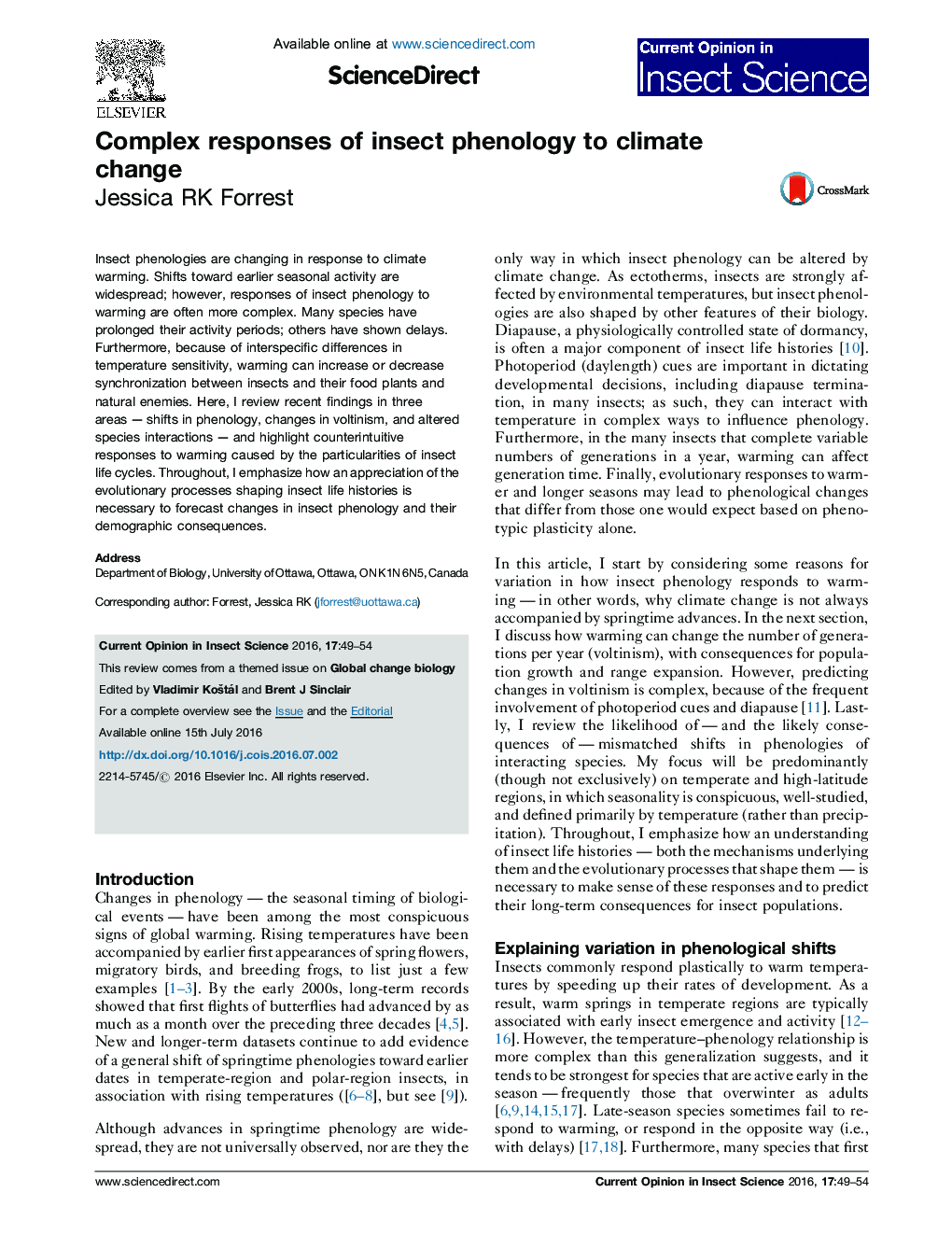| کد مقاله | کد نشریه | سال انتشار | مقاله انگلیسی | نسخه تمام متن |
|---|---|---|---|---|
| 6374023 | 1624373 | 2016 | 6 صفحه PDF | دانلود رایگان |
- Climate change can alter insect phenology in complex and counterintuitive ways.
- Advances in springtime phenology with warming are widespread but not universal.
- Voltinism can increase with warming, but diapause schedules may interfere.
- Interactions with other species can be altered by independent shifts in phenology.
- Forecasting changes in phenology requires understanding of insect life histories.
Insect phenologies are changing in response to climate warming. Shifts toward earlier seasonal activity are widespread; however, responses of insect phenology to warming are often more complex. Many species have prolonged their activity periods; others have shown delays. Furthermore, because of interspecific differences in temperature sensitivity, warming can increase or decrease synchronization between insects and their food plants and natural enemies. Here, I review recent findings in three areas - shifts in phenology, changes in voltinism, and altered species interactions - and highlight counterintuitive responses to warming caused by the particularities of insect life cycles. Throughout, I emphasize how an appreciation of the evolutionary processes shaping insect life histories is necessary to forecast changes in insect phenology and their demographic consequences.
Journal: Current Opinion in Insect Science - Volume 17, October 2016, Pages 49-54
